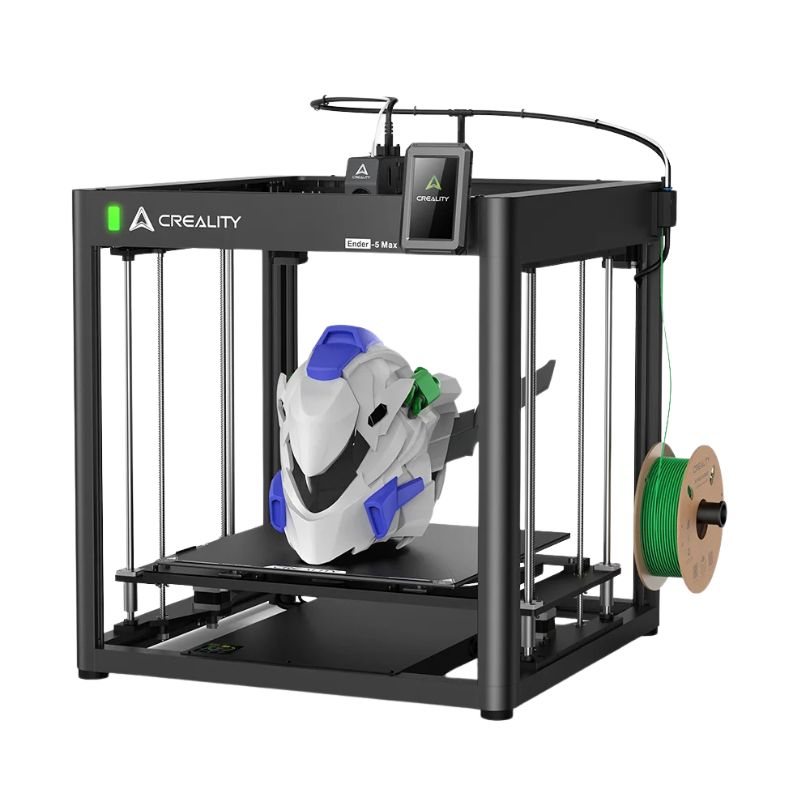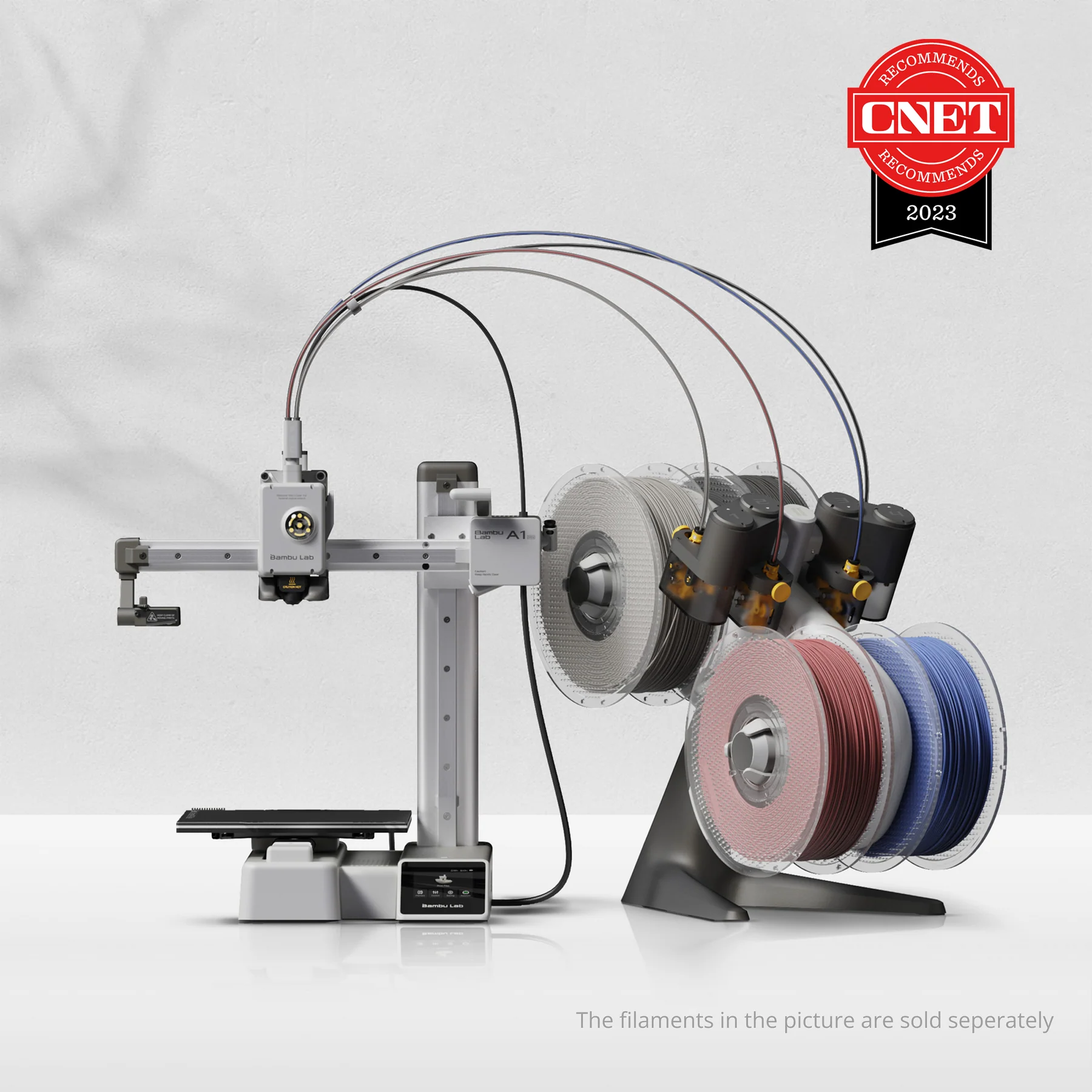Compare Ender 5 Max vs A1 Mini
Comparison between the best 3D printers
Choose the best 3D printer at the best price. The cheapest 3D printers are here.
Buy a 3D printer here with 3D Fila.
 |
 |
|
| Model | Ender 5 Max |
A1 Mini |
| Printing Material | Filament | Filament |
| Buy Filament for Creality Ender 5 Max | Buy Filament forBambu Lab A1 Mini | |
| Estimated price | $769,00 | $549,00 |
| Manufacturer | Creality | Bambu Lab |
| Release Year | 2025 | 2023 |
| Print Volume [mm] | 400x400x400 | 180x180x180 |
| Printer Size [mm] | 649x721x850 | 315x347x365 |
| Weight [kg] | 25,9 | 5,5 |
| Power Loss Recovery | YES | YES |
| Enclosed printer | NO | NO |
| Bed Leveling | Automatic | Automatic |
| Filament End Sensor | YES | YES |
| Bed type | Heated | Heated |
| Power supply system | Direct Drive | Direct Drive |
| Standard nozzle | 0,4 | 0,4 |
| Maximum Nozzle Temperature [°C] | 300 | 300 |
| Maximum Bed Temperature [°C] | 100 | 80 |
| Maximum printing speed [mm/s] | 700 | 500 |
| Filament holder | YES | YES |
| Camera for supervision | YES | YES |
| Recommended filaments | Hyper PLA/PLA/PETG/TPU95A/ABS/ASA/PLA-CF/PA/PLA-Silk | PLA, PETG, TPU, PVA |
| Recommended slicers | Creality Print 5.1 | Bambu Studio, Super Slicer, Cura, Prusa Slicer, Orca |
| Maximum Resolution [mm] | 0,1 | 0,1 |
| Processor | 32-bit Silenciosa | |
| Display | Touchscreen 4,3'' | Touchscreen 2,4'' |
| Power Supply | 1250 W | 150 W |
| Connectivity | USB, Wifi | Wifi, Bambu bus, Cartão SD |
| Operating systems | Windows | Windows, Linux, Macbook |
| Date of registration in the system | 2025-02-18 | 2024-04-10 |
| Release date | 2025 | 2023 |
| Extra features | The Ender 5 Max by Creality features a 400 x 400 x 400 mm build volume, a rigid aluminum frame, and 36-point auto bed leveling. With speeds up to 700 mm/s, it boasts a hardened dual-gear extruder and a 1000W heated bed, reaching 80°C in just 200 seconds. It supports remote management via WLAN, a tri-color status indicator, and quiet operation, making it ideal for high-precision, high-productivity 3D printing. | The Bambu Lab A1 Mini stands out not only for its impressive speed and automatic calibration, but also for its multi-color printing capability thanks to AMS Lite. This innovative system makes multi-color printing easy, making it accessible to everyone. AMS Lite, specific to the A1 Mini, supports up to four different materials simultaneously, providing creative freedom without complications. With comprehensive sensors for energy monitoring and recovery, a camera for timelapses and Wi-Fi control, the A1 Mini and AMS Lite together offer an intuitive and advanced 3D printing experience, ideal for materials such as PLA, PETG and TPU, and designed for simplicity and fast maintenance with quick-change nozzles. |
| Support for multiple colors and materials (AMS and CFS) | NO | YES |
Notes * |
||
| Cost-benefit | 7 / 10 | 7 / 10 |
| Hardware | 5 / 10 | 4.8 / 10 |
| Tela | . | . |
| Print volume | 4 / 10 | 3 / 10 |
| Performance | 6 / 10 | 4 / 10 |
Conclusion |
| In comparing the Creality Ender 5 Max and the Bambu Lab A1 Mini, both printers offer unique advantages that cater to different user needs and preferences in the 3D printing landscape. The Creality Ender 5 Max, with its significantly larger print volume and higher maximum printing speed, is ideal for users who require the capability to produce larger and more complex models. Its robust build quality, highlighted by a rigid aluminum frame, can be particularly appealing to professionals or enthusiasts who prioritize durability and precision. Additionally, the presence of advanced features like a hardened dual-gear extruder and reliable auto bed leveling enhances its usability for intricate prints. On the other hand, the Bambu Lab A1 Mini is designed with user-friendliness and versatility in mind. Its innovative multi-color printing capability through the AMS Lite system distinguishes it, allowing for creative freedom without complications. The printer is lighter and more compact, making it suitable for users with limited space or those seeking portability. Although it has a smaller print volume and slightly lower printing speeds, it compensates with advanced monitoring features, such as energy recovery and Wi-Fi control. Both printers are similarly priced and offer automatic bed leveling and a heated print bed, indicating that users can expect reliable performance in terms of ease of use and print quality. However, the Ender 5 Max could be more favorable for users requiring higher performance and larger print capacities, while the A1 Mini may appeal more to hobbyists and those interested in colorful, creative projects. In conclusion, the choice between the Ender 5 Max and the A1 Mini ultimately hinges on the specific printing needs of the user. For large-scale projects and high-speed printing, the Ender 5 Max is a strong contender. Conversely, for those focused on creative, multi-color printing and ease of maintenance, the A1 Mini presents an excellent option. |

